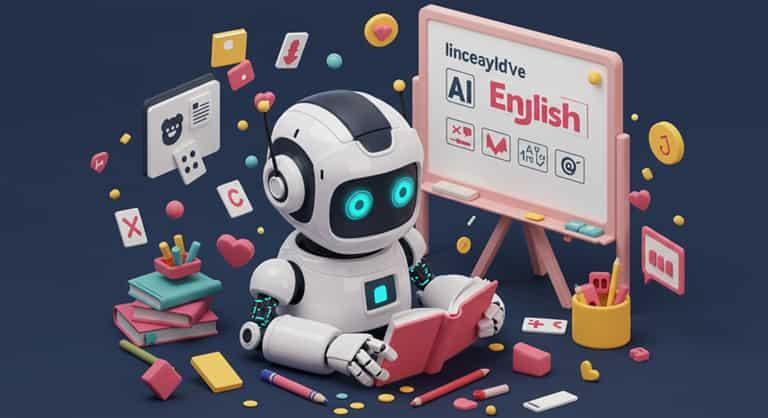Artificial Intelligence (AI) has rapidly become a valuable tool in the world of education, especially in learning English as a second language. Apps like Duolingo, Master English, and Learna are revolutionizing language acquisition by offering flexible study schedules, real-time feedback, and customized learning experiences. These digital platforms allow users to study at any time, correct mistakes instantly, and adapt lessons to their pace, which is especially useful for busy learners or those in remote areas.
The growth of this industry is undeniable. According to Statista, the global market for language learning apps is projected to reach $17.5 billion by 2027. This surge in popularity highlights how technology is playing an increasingly significant role in education. However, despite its rapid advancement, experts agree on one key point: AI is not yet a replacement for human teachers.
“Artificial intelligence optimizes study time and supports practice, but it doesn’t replace human instruction,” says Valeria Vera, Latin America marketing lead at Italki. Her words reflect a growing consensus among educators that while AI tools are impressive, they lack the depth and adaptability of a human instructor.
AI-based platforms still struggle with detecting emotions, understanding language nuances, or grasping cultural references. These elements are critical to mastering a language, as they go far beyond grammar and vocabulary. Unlike teachers, AI cannot tailor explanations to individual learning styles or adapt lesson plans in real-time.
“Each student faces different challenges, and a teacher can adjust their approach on the fly. That flexibility doesn’t yet exist in machines,” explains Nina Anziska, an international growth specialist at Outschool.
Some apps do offer pronunciation exercises, but their assessments are basic at best. These systems can rarely distinguish between accents, tones, or the subtleties of intonation. While AI may tell you if a sentence is grammatically correct, it won't guide you on using the right tone in a job interview or help you interpret sarcasm or humor.
Speaking English—or any language—is about more than memorizing grammar rules. It involves reading between the lines, recognizing idiomatic expressions, and understanding cultural context. Phrases like “break a leg” or “hit the books” make little sense without background knowledge. In such cases, a teacher acts as a cultural translator, bridging the gap between literal language and intended meaning.
“Teachers don’t just teach English; they also share social references that a machine can’t accurately replicate,” says Kate Bell, Director of Assessment at Education First.
The Case of Mexico
Despite the rise of digital tools, Mexico still faces major challenges in English proficiency. In the 2024 EF English Proficiency Index, the country ranks 87th out of 116 nations, maintaining its position as second-to-last in Latin America, ahead of only Haiti. Although Mexico climbed two spots compared to the previous year, it remains in the “very low proficiency” category.
Compounding this issue is the fact that 80% of job listings in Mexico require English, yet only 3% of students reach the desired level by the end of high school, according to Anziska. This gap highlights the inadequacy of traditional methods and explains the growing popularity of digital tools.
“The demand far exceeds what traditional methods can deliver, which is why digital platforms have gained momentum,” Vera explains.
Yet, despite their popularity, these platforms don’t solve the root problem: the lack of meaningful human interaction in the learning process. Apps can assist with practice and review, but they cannot fully replace the feedback, empathy, and cultural knowledge a teacher provides.
Some platforms like Italki are trying to bridge this gap by combining AI features with teacher supervision. Their technology generates summaries, vocabulary lists, and progress tracking, while teachers still handle in-depth corrections and provide nuanced explanations.
Outschool, which has grown 20% in Mexico over the past year, also embraces a hybrid approach. “Technology is complementary, but the teacher’s role remains indispensable to help students grasp the language beyond grammar and automatic translations,” Anziska emphasizes.
The Future Is Hybrid
AI is here to stay—and its role in English education will only expand. From generating content to automating repetitive tasks, its integration will deepen. But for now, there’s no substitute for human contact.
“Language learning is a deeply human experience,” Bell concludes. “AI can support it, but it can’t motivate learners or build a true understanding of the language.”
In the end, the most effective approach may be a hybrid one—combining the speed and convenience of AI with the empathy, flexibility, and cultural insight of a skilled teacher.


